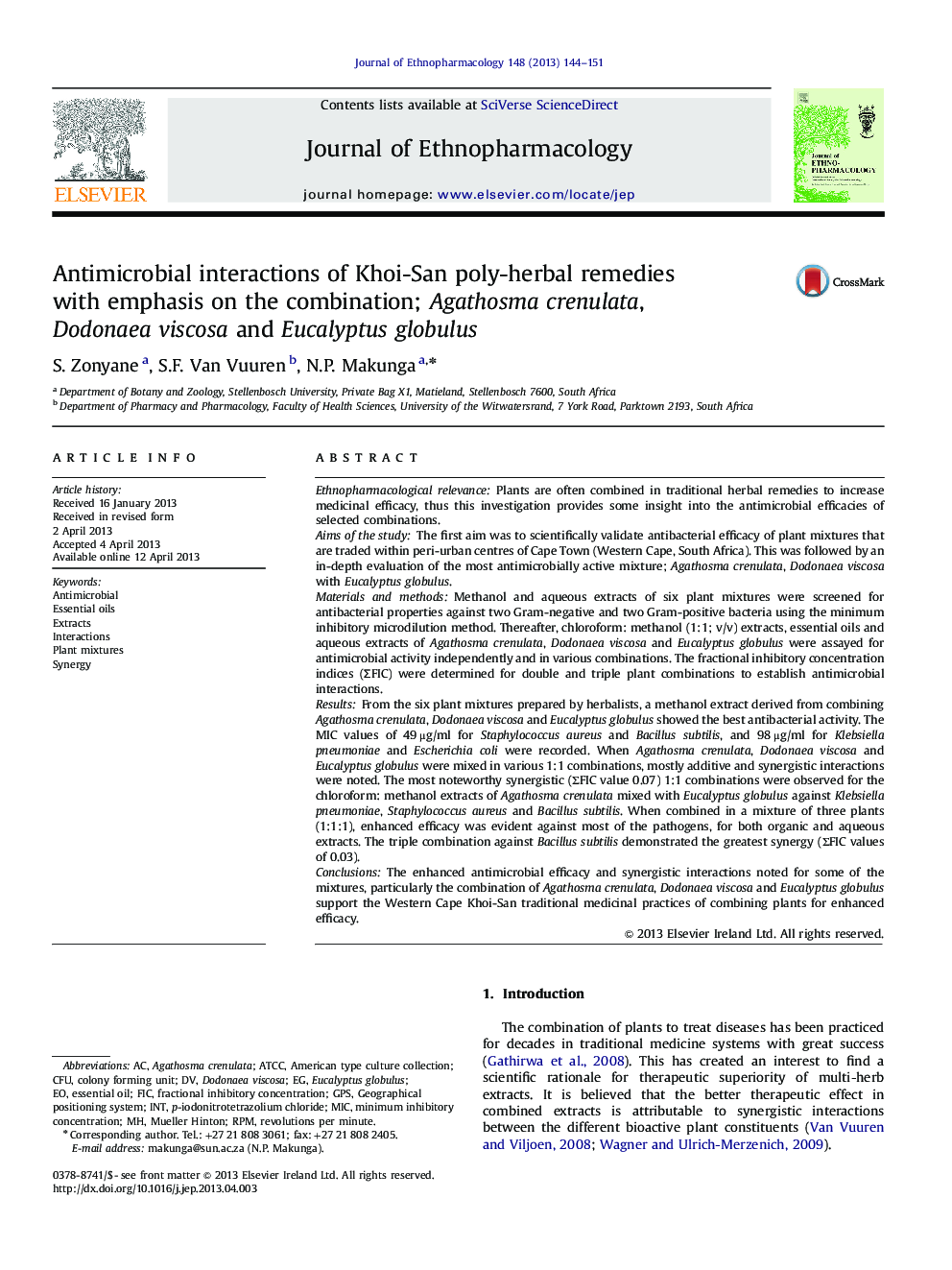| Article ID | Journal | Published Year | Pages | File Type |
|---|---|---|---|---|
| 5837590 | Journal of Ethnopharmacology | 2013 | 8 Pages |
Ethnopharmacological relevancePlants are often combined in traditional herbal remedies to increase medicinal efficacy, thus this investigation provides some insight into the antimicrobial efficacies of selected combinations.Aims of the studyThe first aim was to scientifically validate antibacterial efficacy of plant mixtures that are traded within peri-urban centres of Cape Town (Western Cape, South Africa). This was followed by an in-depth evaluation of the most antimicrobially active mixture; Agathosma crenulata, Dodonaea viscosa with Eucalyptus globulus.Materials and methodsMethanol and aqueous extracts of six plant mixtures were screened for antibacterial properties against two Gram-negative and two Gram-positive bacteria using the minimum inhibitory microdilution method. Thereafter, chloroform: methanol (1:1; v/v) extracts, essential oils and aqueous extracts of Agathosma crenulata, Dodonaea viscosa and Eucalyptus globulus were assayed for antimicrobial activity independently and in various combinations. The fractional inhibitory concentration indices (ƩFIC) were determined for double and triple plant combinations to establish antimicrobial interactions.ResultsFrom the six plant mixtures prepared by herbalists, a methanol extract derived from combining Agathosma crenulata, Dodonaea viscosa and Eucalyptus globulus showed the best antibacterial activity. The MIC values of 49 μg/ml for Staphylococcus aureus and Bacillus subtilis, and 98 μg/ml for Klebsiella pneumoniae and Escherichia coli were recorded. When Agathosma crenulata, Dodonaea viscosa and Eucalyptus globulus were mixed in various 1:1 combinations, mostly additive and synergistic interactions were noted. The most noteworthy synergistic (ΣFIC value 0.07) 1:1 combinations were observed for the chloroform: methanol extracts of Agathosma crenulata mixed with Eucalyptus globulus against Klebsiella pneumoniae, Staphylococcus aureus and Bacillus subtilis. When combined in a mixture of three plants (1:1:1), enhanced efficacy was evident against most of the pathogens, for both organic and aqueous extracts. The triple combination against Bacillus subtilis demonstrated the greatest synergy (ΣFIC values of 0.03).ConclusionsThe enhanced antimicrobial efficacy and synergistic interactions noted for some of the mixtures, particularly the combination of Agathosma crenulata, Dodonaea viscosa and Eucalyptus globulus support the Western Cape Khoi-San traditional medicinal practices of combining plants for enhanced efficacy.
Graphical abstractDownload high-res image (301KB)Download full-size image
